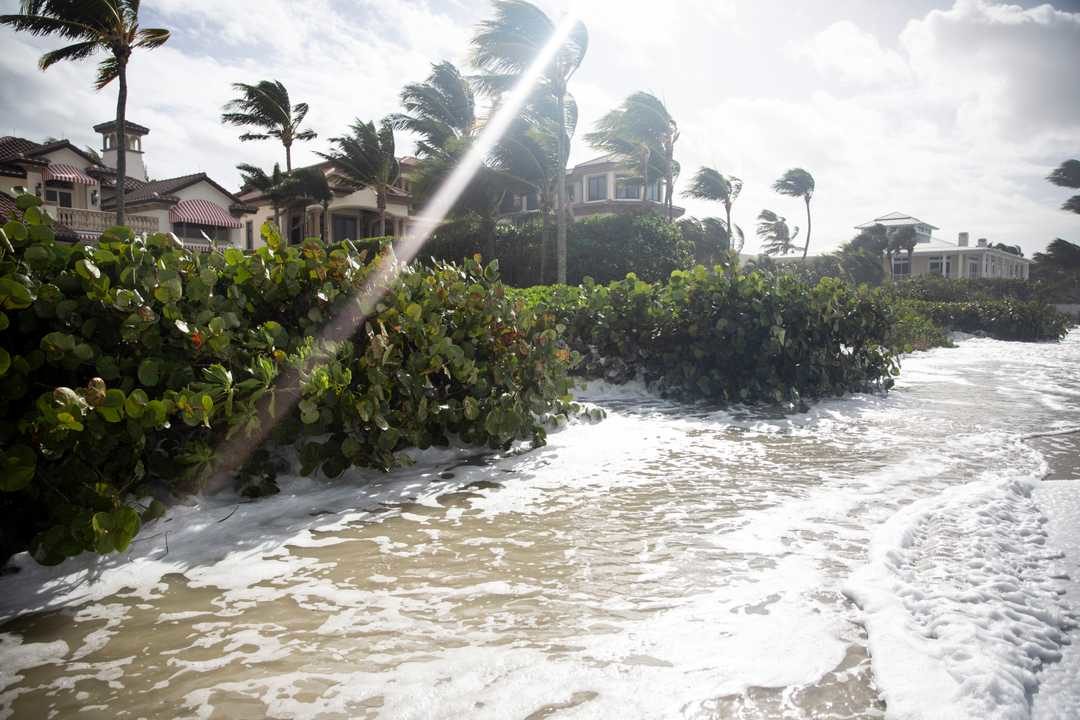
"It's not like what you see with a tsunami wave caused by an earthquake," said Chris Fisher, a meteorologist with the National Weather Service.
But it's a fairly rare occurrence. Last week's apparent meteotsunami caused water levels to jump by nearly a foot and forced beachgoers from Naples to Sanibel Island to scurry out of the way of waves last week.
A meteotsunami - not to be confused with a tsunami - consists of large waves caused by air pressure disturbances and quick-moving storms, according to the National Oceanic and Atmospheric Administration.
Tsunamis generally are attributed to large displacements of water, usually from major seismic events such as earthquakes, volcanic eruptions or explosions.
At 1:30 p.m. Thursday, Dec. 20, temperatures dropped by almost 10 degrees in Southwest Florida as barometric pressure momentarily rose by 1.6 millibars. Waves were projected to be about 1.7 feet at 1:30 p.m. but reached 5.04 feet before decreasing rapidly over the next hour.
Wind gusts measured by the National Weather Service spiked at 54 mph as a storm brought heavy rains and tornado warnings to the Naples area.
"When we had that strong line that came through with the rapid change in pressure and temperature, it was a really brief increase in wave heights," Fisher said. "It was more of a neat occurrence."
A shallow offshore shelf, such as off Southwest Florida, and inlets or bays can amplify a meteotsunami, according to NOAA.
The meteotsunami did not cause any significant flooding.
Dave Rivera, streets and traffic supervisor for Naples, said stormwater crews checked all pump stations and outfalls to ensure they were working.
The meteorological event is regional in nature and occurs in the U.S. along the East Coast, the Gulf of Mexico and Great Lakes.
Most meteotsunamis are small and mostly go unnoticed. They make up 20 percent of tsunamis, according to research presented at the 2018 Ocean Sciences Meeting in Portland, Oregon. In many cases, meteotsunamis are mislabeled as other events such as rip currents, tidal waves or a seiche.
Last week's meteotsunami was not the first one that has struck Naples. Almost three years ago, one produced waves 7.36 feet high, nearly 5.5 feet more than the projected levels for that day.
In the U.S., the largest meteotsunami hit Boothbay Harbor, Maine, and resulted in waves as high as 12 feet, damaging boats and shoreline structures in 2008.
Prior to the January 2016 meteotsunami in Naples, Florida had one notable event when a 10-foot wave caused injuries to 75 people and damaged property in Daytona Beach in 1992.
The largest meteotsunami recorded in the world was in Vela Luka, Croatia, where waves reached 19.5 feet high in June 1978.
Matthew Cappucci of the Washington Post contributed to this story.



Comment: While events like this have occurred before, all around the world we're seeing them increase in frequency and intensity, along with a variety of related phenomena: